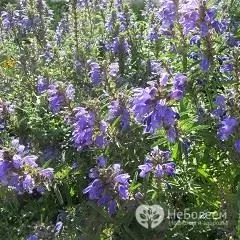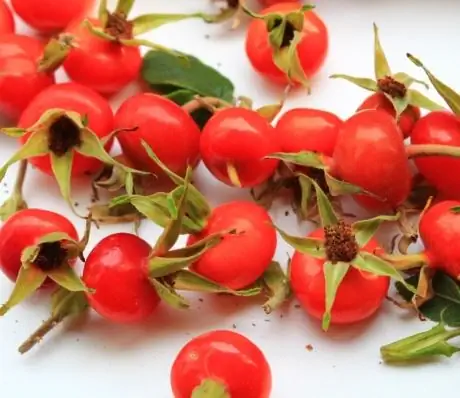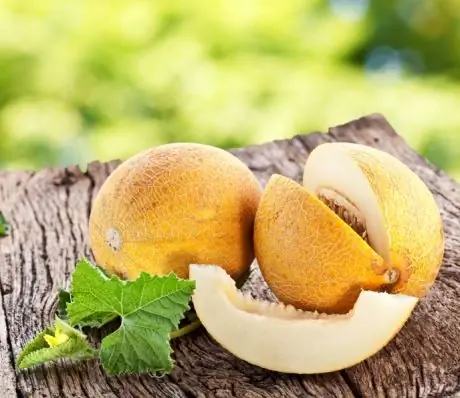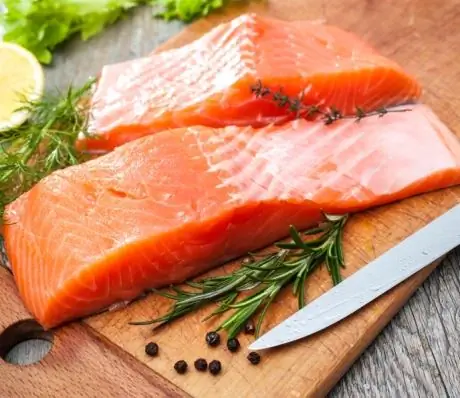- Author Rachel Wainwright [email protected].
- Public 2023-12-15 07:39.
- Last modified 2025-11-02 20:14.
Snakehead moldavian
Instructions for use:
- 1. Chemical composition
- 2. Useful properties
- 3. Indications for use
- 4. Contraindications
- 5. Home remedies

Moldavian snakehead is a herbaceous plant, preparations from which have an astringent, anti-inflammatory, bactericidal, soothing and wound healing effect.
Chemical composition
Moldavian snakehead (bruise, vegetable snakehead, dragonhead, Turkish lemon balm, mother plant, honey cake, Moldavian balsam) is an unpretentious perennial, sometimes annual, garden ornamental or wild herb with the scent of lemon balm from the Lamiaceae family.
Biologically active substances that make up the ground part of Turkish lemon balm:
- essential oil, including α-terpineol (4.5-13.1%), citral (16.7-24.4%) and linalool (3.7-9.6%);
- phenolic compounds: phenolic acids (including caffeic, chlorogenic, cinnamic, ferulic, chicoric and gallic acids), flavonoids (including apigenin, luteolin, quercetin, cinaroside, hesperidin and dihydroquercetin);
- polysaccharides: neutral sugars (including fructose, glucose, xylose, arabinose, galactose, rhamnose), uronic acids (including glucuronic and galacturonic acids);
- organic acids: citric, malic, tartaric and oxalic acids;
- iridoids: harpagid, peoniflorin and harpagid acetate;
- triterpene compounds: oleanolic and ursolic acids;
- amino acids: leucine, glutamic and aspartic acids;
- tannins;
- micro and macro elements.
Beneficial features
The components of Moldavian snakehead essential oil have antibacterial, antifungal and antioxidant effects. There is data confirming its antibacterial activity against 6 species of bacteria (cereus, Bacillus subtilis, Micrococcus luteus, B. Staphylococcus aureus, Serratia marcescens, Klebsiella pneumonia) and 4 species of fungi (Aspergillus niger, Fusarium oxysporum, Rhizopus holon. Expectorant, diuretic and sedative properties have also been established.
The Moldavian snakehead is not a pharmacopoeial plant, it is also not registered as a medicine, therefore it is not used in official medicine. However, the plant is a part of herbal teas and biologically active food additives.
The main component of Turkish lemon balm essential oil - citral - is used as a raw material for obtaining vitamin A. The plant is part of the drug of the same name for the treatment of eye diseases. In pediatric practice, it is used as a means to lower pressure in intracranial hypertension.
In some European countries (Romania, Hungary, Germany), the Moldavian snakehead is grown as a medicinal plant as a substitute for lemon balm.
In folk medicine, Turkish lemon balm herb in the form of infusions is used to stimulate appetite, normalize the digestive tract, as a sedative, analgesic, anticonvulsant and wound healing agent. In Tibetan medicine, it is used to treat diseases of the stomach and liver. Poultices and compresses are used for headaches, rheumatism, bruises and bruises, decoctions for toothache and as a means of rinsing the mouth for diseases of inflammatory etiology.
Citral, which is part of the snakehead, has a bactericidal effect, so its fresh leaves can be used to heal purulent wounds, and dry grass can be used to treat inflammatory kidney diseases, in particular, pyelonephritis.
The seeds of the plant have a tonic, carminative and astringent effect. They are used as a de-irritating agent in the treatment of fever.
Indications for use
- diseases of the nasopharynx and throat (sinusitis, rhinitis, etc.);
- hypertension;
- metabolic disorders;
- rheumatism, arthritis, gout;
- depression;
- toothaches;
- vitamin deficiency, weakness;
- appetite disorders;
- diseases of the heart, liver and stomach;
- cholecystitis;
- wounds, burns, skin ulcers, eczema;
- bruises, bruises.
Contraindications
Moldavian snakehead has low toxicity.
Contraindications to the use of preparations from the plant are:
- inflammation of the intestines and stomach in acute course;
- pregnancy;
- childhood;
- individual intolerance to biologically active substances that make up the plant.
In case of an overdose with essential oil, it is possible to develop lethargy, drowsiness, slow pulse, burns of the mucous membrane of the upper respiratory tract, and a decrease in blood pressure.
Home remedies from Moldavian snakehead
- infusion (inside - with general weakness, diseases of the kidneys, gastrointestinal tract, bladder; externally in the form of compresses - in the treatment of wounds and ulcers; topically in the form of rinsing - with toothache): 1 tbsp. l. raw materials for 200 ml of boiling water; infusion time - 15 minutes under the lid; method of application - 3 times a day, 100 ml;
- decoction (inside - for kidney disease): 2 tbsp. l. raw materials for 200 ml of hot water; cooking time - 20 minutes;
- tincture (inside - with hypertension; externally - with rheumatism, arthritis, gout): 1 part of the root of the plant to 10 parts of vodka; cooking time - 15-30 days in a cool, dark place; method of application - 35-40 drops each (can be diluted in water or washed down with water).

Maria Kulkes Medical journalist About the author
Education: First Moscow State Medical University named after I. M. Sechenov, specialty "General Medicine".
Information about the drug is generalized, provided for informational purposes only and does not replace the official instructions. Self-medication is hazardous to health!






